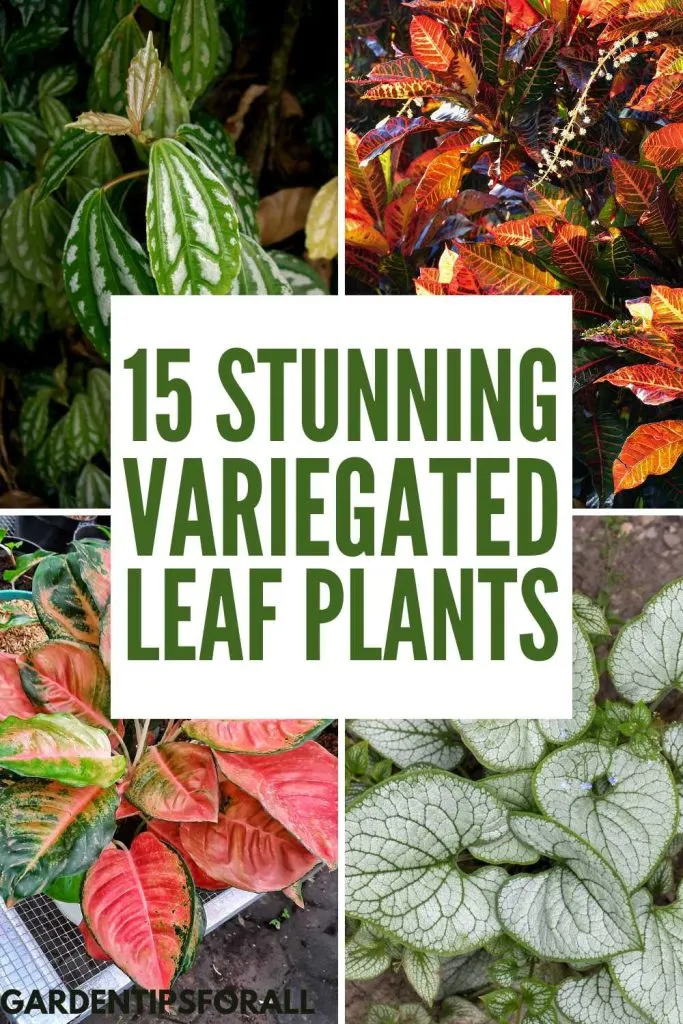15 Amazing Variegated Leaf Plants
Here are some attractive variegated plants that will give you exciting foliage.
To increase interest and value to property many people add a variety of plants to their yard and garden. Flowers, ornamental grasses, bushes, shrubs and even trees all add beauty to your property.
A variety of plants make your yard, garden or home more interesting and finding plants with variegated leaves can add even more excitement and interest to your plants.

Here is a look at various types of variegated leaf plants that can help spruce up your space and give it much more eye appeal.
15 Stunning Plants with Variegated Leaves
#1. Begonia Rex (Begonia Rex-Cultorum)
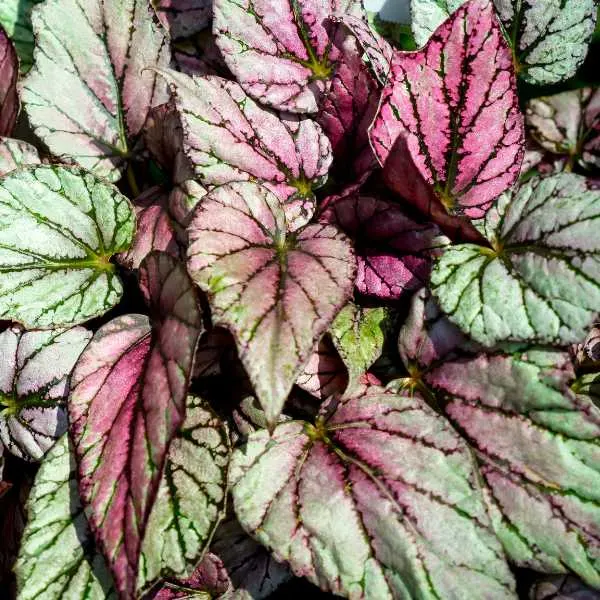
Another name: Fancy-Leaf Begonias
This cultivar has leaves that vary in form, from seashell swirls to ivy, to heart-like forms, and much more, notable for its breathtaking colors mostly a mixture of pink, green, or burgundy, and at times include a grayish silver hue.
Begonia rex is mainly grown indoors but should be kept out of reach of children and pets due to its toxicity when ingested.
#2. Birkin (Philodendron ‘Birkin’)
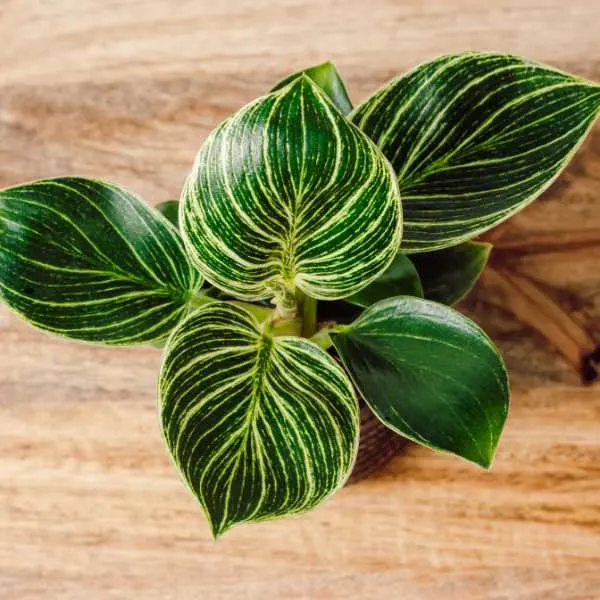
The Philodendron ‘Birkin’ is an indestructible green perennial cultivar of the Araceae family.
Philodendron derives its name from two Greek words, Phileo, which means ‘to love’ and dendron, which means ‘tree’
It is a trending indoor plant that brightens any garden with its rounded leaves that showcase melodramatic stripes and variegated lines across their surface. It is also one of the best windowsill plants.
This plant should always be hydrated and they can be grown outside in zones 10 through 11.
#3. Berberis Thunbergia F. Atropurpurea (Purple Japanese Barberry)

Other names: Red Leaf Japanese Barberry, Thunbergia Barberry, Red Barberry
Purple Japanese Barberry is a thick spiraling deciduous shrub that features widely oval, red-purple leaves which turn into a distinct red or red-orange hue before the fall.
The red leaves occur when the plant is exposed to the sun. This plant does well when grown in zones 4 through 8.
Its thorny nature keeps trespassers away.
#4. Agave Lophantha ‘Quadricolor’
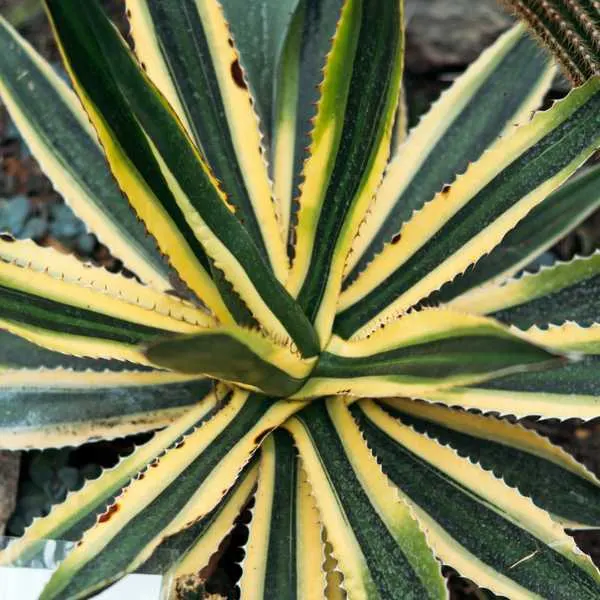
Other names: Agave univittata, Center stripe Agave, Thorn-crested Agave, Mckelvey’s Agave, Thorn-crested century plant, and quadricolor century plant
Agave lophantha is an evergreen succulent of the Asparagaceae family. Its foliage’s shade differs in color as per the cultivar. The Agave lophantha ‘quadricolor’ has green leaves and yellow edges with dark-reddish teeth coating on the sides.
You can grow this plant in a container or in the ground in zone 8.
#5. Joseph’s Coat Plant
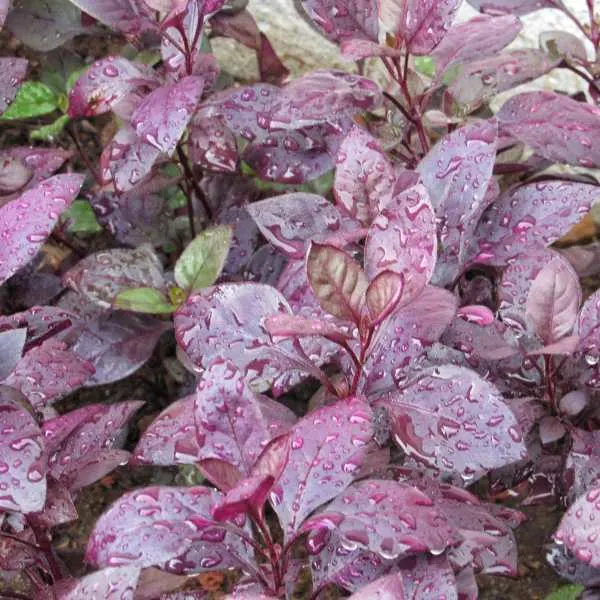
Another name: Joyweed
Joseph’s Coat also known is a tropical perennial plant known for its colorful variegated leaves. The leaves of this plant are green with variegated red, orange, purple, brown or copper spots.
Although this is a flowering plant, the white flowers are small are barely noticeable against the beautiful leaves.
This plant does well in full soil and moist well-drained soil when grown in zone 10 and 11. The plant grows to be 6 to 12 inches tall and up to 1 ½ feet wide. Joseph’s coat is native to South and Central America.
#6. Calathea White Fusion

Other names: Peacock, Zebra, Rattlesnake
Calatheas are tropical indoor plants notable for the bold imprinting on their lavish foliage.
The variegated foliage of this cultivar features green leaves with white marks in contrast. Calethea plants have a magenta shade on the underside running down the stem.
Calathea has a particular way of being cared for but once mastered it grows very fast and gives an appealing look to your garden. This plant can thrive outdoors when grown in zones 10 through 12.
#7. Acer Campestre
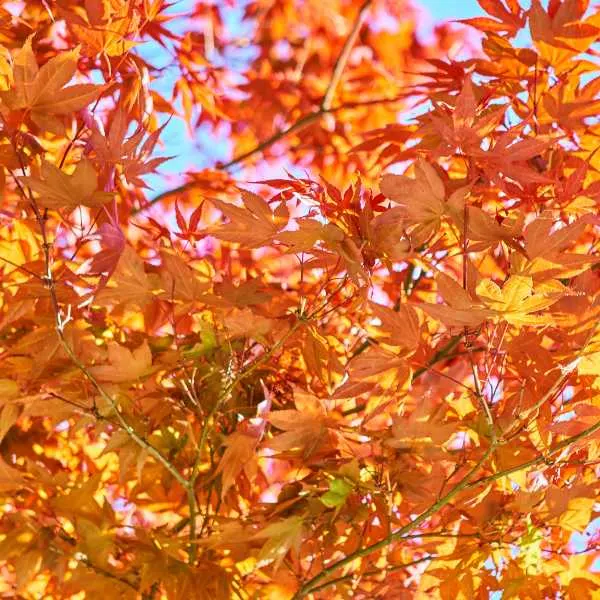
Another name: Field Maple
Acer campestre is an eye-catching variegated form of field maple. It has bright pink foliage when emerging and matures to creamy margins and a green center.
Acer campestre is a flowering plant species of the sapindaceae family native to Britain, southwest Asia, North Africa, and Europe. It is also a deciduous tree with leaves in opposite pairs wide with smooth margins. Acer campestres are insect pollinated.
This plant thrives best in zones 5 through 8.
#8. Fruit Salad Plant (Monstera Thai Constellation)
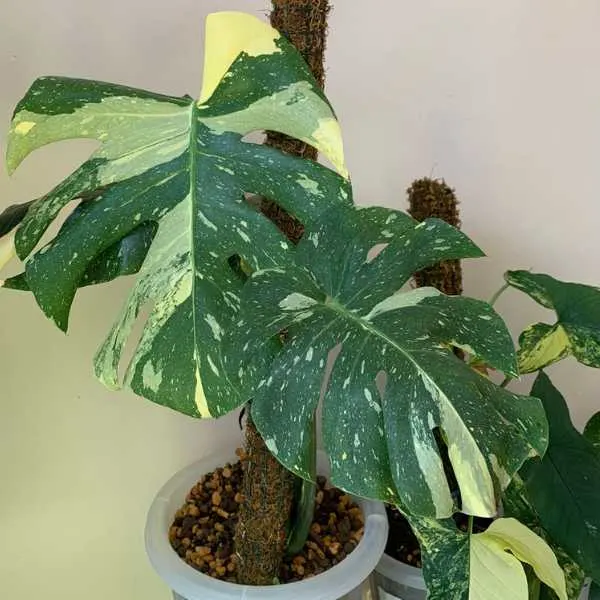
Monstera Thai constellation is similar to Monstera Deliciosa – its parent plant but can be distinguished by other features such as splatters and blotches of off-white or creamy color on the green leaves.
These physical features make the plant look like stars in the night sky hence the name ‘Thai constellation monsters.
This plant is not cold hardy and can only thrive outdoors when grown in zones 9b through 11.
#9. Aglaonema
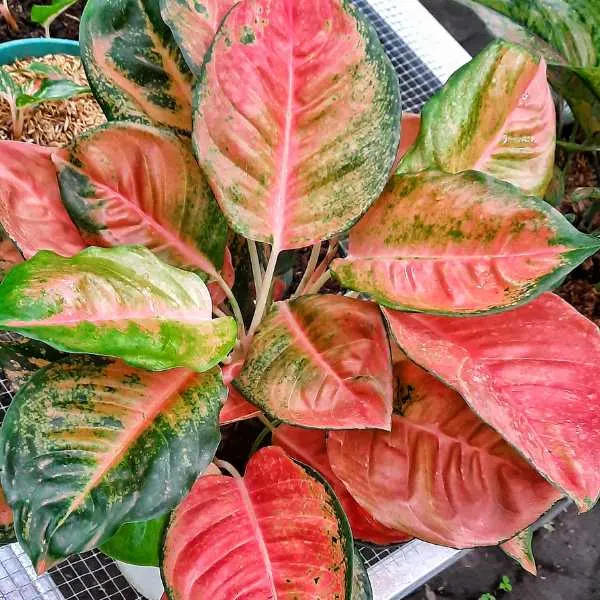
Aglaonema is a delightful variegated houseplant with beautiful dark and light green or red foliage that makes them look lavish. However, it is an easy-to-maintain plant.
Aglaonema only requires water when the topsoil dries up. They do not need direct sunlight making them ideal for growing indoors – in bedrooms and living rooms. But they can also thrive outdoors in zones 10 and 11.
#10. Brunnera Macrophylla (Siberian Bugloss) Sea Heart
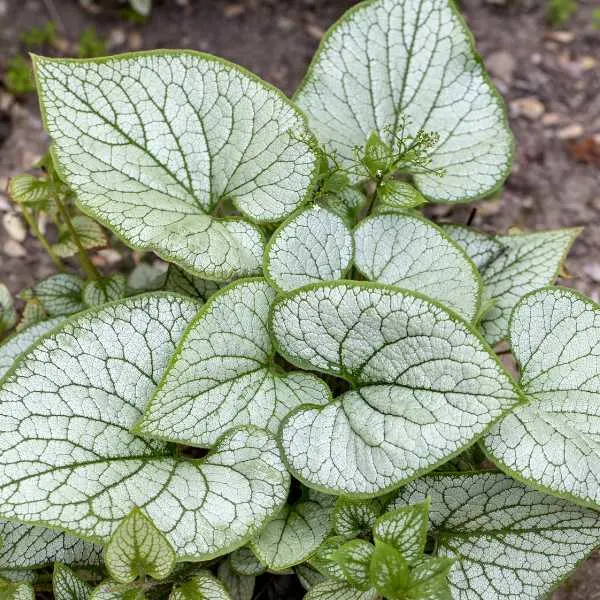
Brunnera macrophylla is a rhizomatous cluster-forming perennial that thrives in shaded areas. It has a very appealing heart shaped leaves clumsily patterned with silver with green colored edges. This foliage is accompanied by small rich blue (forget-me-not) flowers.
Brunnera macrophylla does well when grown in zones 3 through 8.
#11. Aluminum Plant (Pilea Cadierei)

Another name: Watermelon pilea
The aluminum plant is a flowering plant species of the nettle family Urticaceae. It is an evergreen perennial with dark green leaves that have silvery patches – hence the name ‘aluminum plant’.
The leaves take up an oval shape and are arranged opposite to each other. Aluminum plants do not grow well under direct sunlight. They need indirect sunlight to allow the silver patterns to brighten up. The best place to stay is on a window sill, away from direct sunlight.
They can be grown outside in zones 10 and 11.
#12. Creeping Fig (Ficus Pumila Variegata)

Other names: Climbing fig, Creeping rubber plant, Ok-Gue, Ficus repens
In Latin, Pumila means ‘dwarf’ and this perfectly describes the shape of the leaves on the creeping pig plant.
The creeping fig is an enthusiastic, fast-growing, evergreen, and self-clinging climber known for blanketing structures. It can grow with low maintenance and can be pruned to form whatever shape you fancy. They are best suited to be grown in zones 9 through 11.
Safety precaution – be careful when pruning the Ficus genus as the toxic milky sap can cause skin inflammation.
#13. Croton (Codiaeum Variegatum)
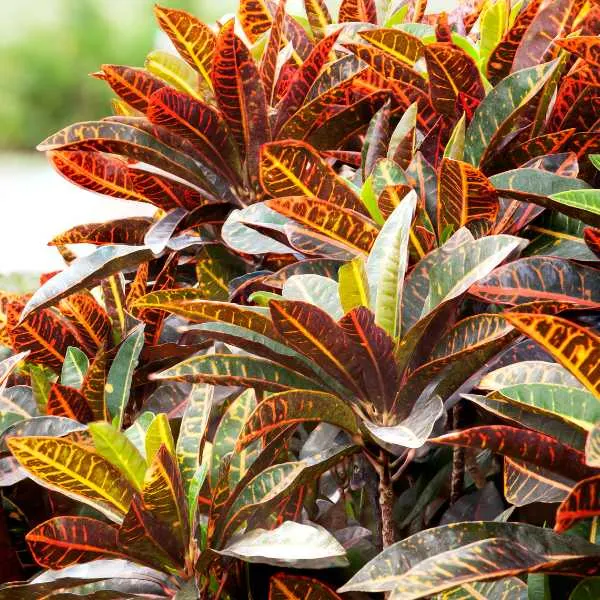
Codiaeum variegatum originated in Indonesia, Australia, and other Asian countries.
Croton is a common house plant that is grown for its attractive foliage. It is an evergreen, tender perennial of the euphorbia family with shiny alternate (linear or oval) leaves.
The foliage color varies from green variegated with purple, red, pink, yellow, orange, or white in different combinations that change as the leaves mature. Codiaeum variegatum does well when grown in zones 11 and 12.
#14. Mosaic Plant (Fittonia Albivenis)
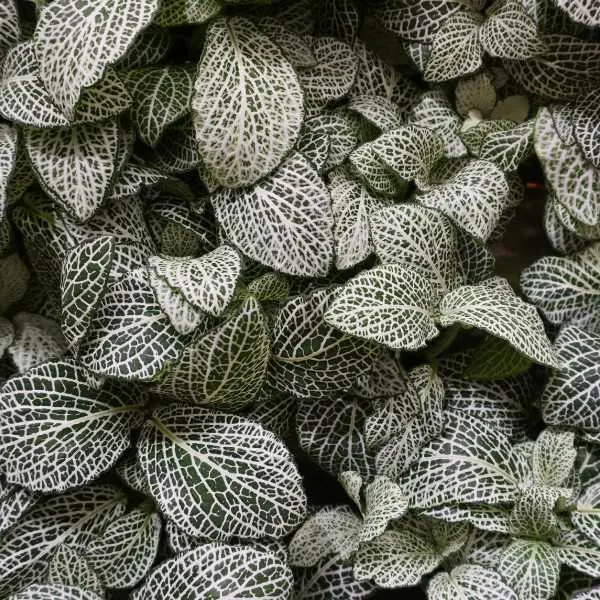
Another name: Nerve plant
The mosaic plant is a flowering plant species of the family Acanthaceae
Its origin is in Peru, Bolivia, Ecuador, Colombia, and Northern Brazil.
It is a crawling evergreen perennial distinguished by its dark green foliage in contrast with white or red veins. The mosaic plant thrives in zones 10 and 11.
It produces small flowers with off-white to white colors.
#15. Prayer Plant (Maranta Leucoeura Kerchoveana)
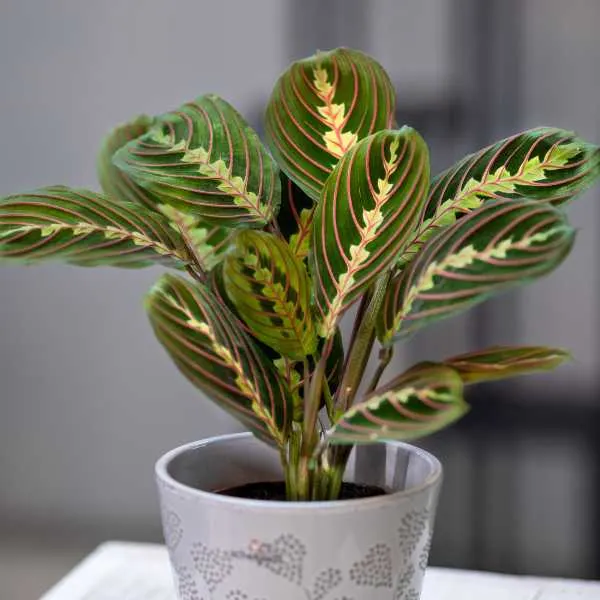
Another name: Green prayer plant, Rabbit’s foot, Rabbit track.
Prayer plant is an evergreen plant with variegated leaves. It originates in Brazil where people mainly use it as a houseplant because of its attractive foliage.
The ‘prayer plant’ gets its name from the plant’s habit of folding upward at night as if in deep player mode.
The leaves of Maranta Leuconeura are oval, green-grey with dark green to brown blotches across the face. The colors and vein arrangements are invisible from the back. It can be thrive outdoors in zones 11 and 12.
Final Thoughts on Plants with Variegated Leaves
Variegated plants are stylish, bringing a sense of lavishness to any space they occupy. Any of these plants with variegated leaves will add interest and excitement to your home, yard or garden. You just have to choose whichever one you like best that also meets your needs.
